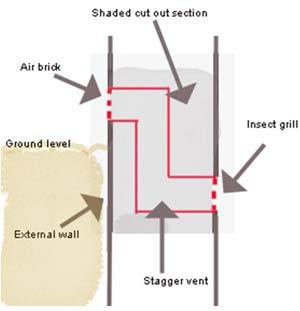Hi fellas, id be grateful if someone could give me a bit of advice with a damp cellar.
Long story short, old building with a closed cellar since built by a concrete floor. Concrete floor wood and steel support became rotten which meant it had to be replaced.
It was replaced with a wood floor which has become rotten again in 2 years while the building was closed. Due to no air and the cellar floor being left as bare soil.
Sharp sand, damp proof membrane and paving slabs were placed down.
The floor appears to be dry but the wall are a problem.
I understand the reason the wood floor had become rotten was due to condensation and a lack of air but as its completely underground its very hard to install any ventilation. I've recently got a heat recovery unit but I don't think its providing enough air as the cellar is rather large.
With 19" walls and approx 6 foot underground I cant work out whether its rising damp or penetrating, I think its both as the walls feel wet to touch.
I had one builder tell me to apply tanking slurry although he said he couldn't guarantee it which sounds off putting.
Any advice as to what needs to be done, or who I should call in order to find out what the problem is?
Appreciate any replies thankyou.
Long story short, old building with a closed cellar since built by a concrete floor. Concrete floor wood and steel support became rotten which meant it had to be replaced.
It was replaced with a wood floor which has become rotten again in 2 years while the building was closed. Due to no air and the cellar floor being left as bare soil.
Sharp sand, damp proof membrane and paving slabs were placed down.
The floor appears to be dry but the wall are a problem.
I understand the reason the wood floor had become rotten was due to condensation and a lack of air but as its completely underground its very hard to install any ventilation. I've recently got a heat recovery unit but I don't think its providing enough air as the cellar is rather large.
With 19" walls and approx 6 foot underground I cant work out whether its rising damp or penetrating, I think its both as the walls feel wet to touch.
I had one builder tell me to apply tanking slurry although he said he couldn't guarantee it which sounds off putting.
Any advice as to what needs to be done, or who I should call in order to find out what the problem is?
Appreciate any replies thankyou.




